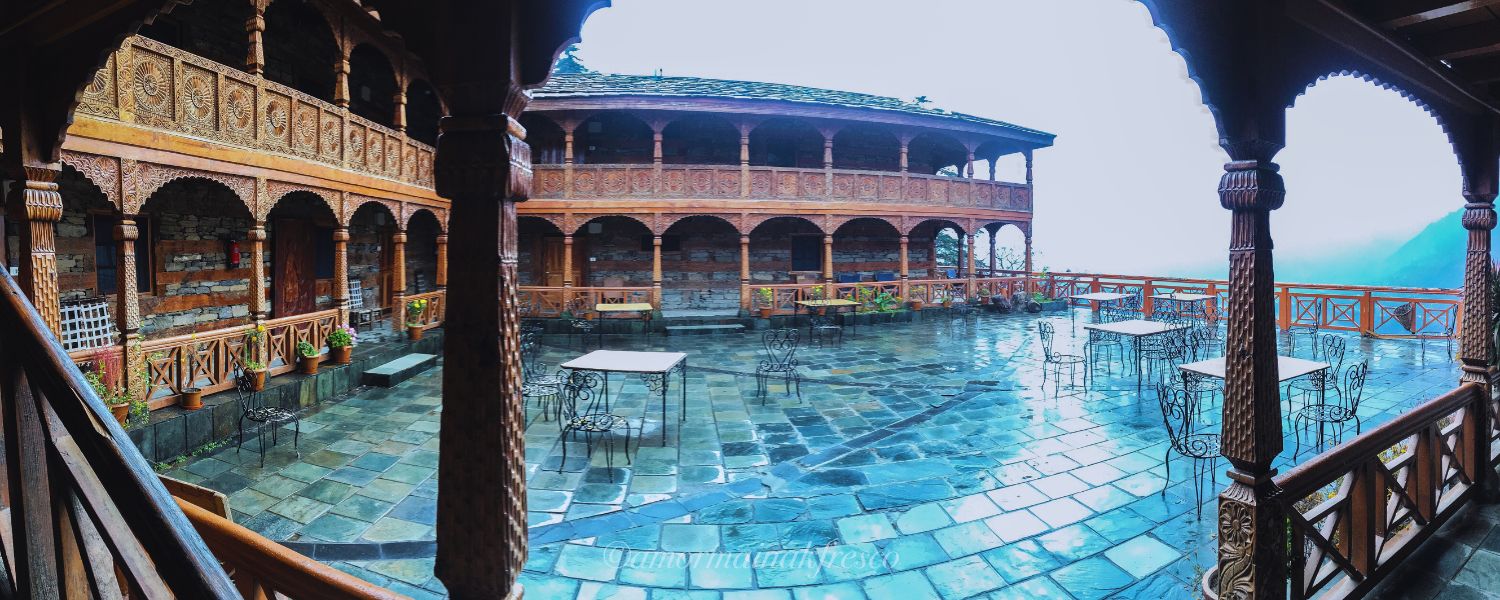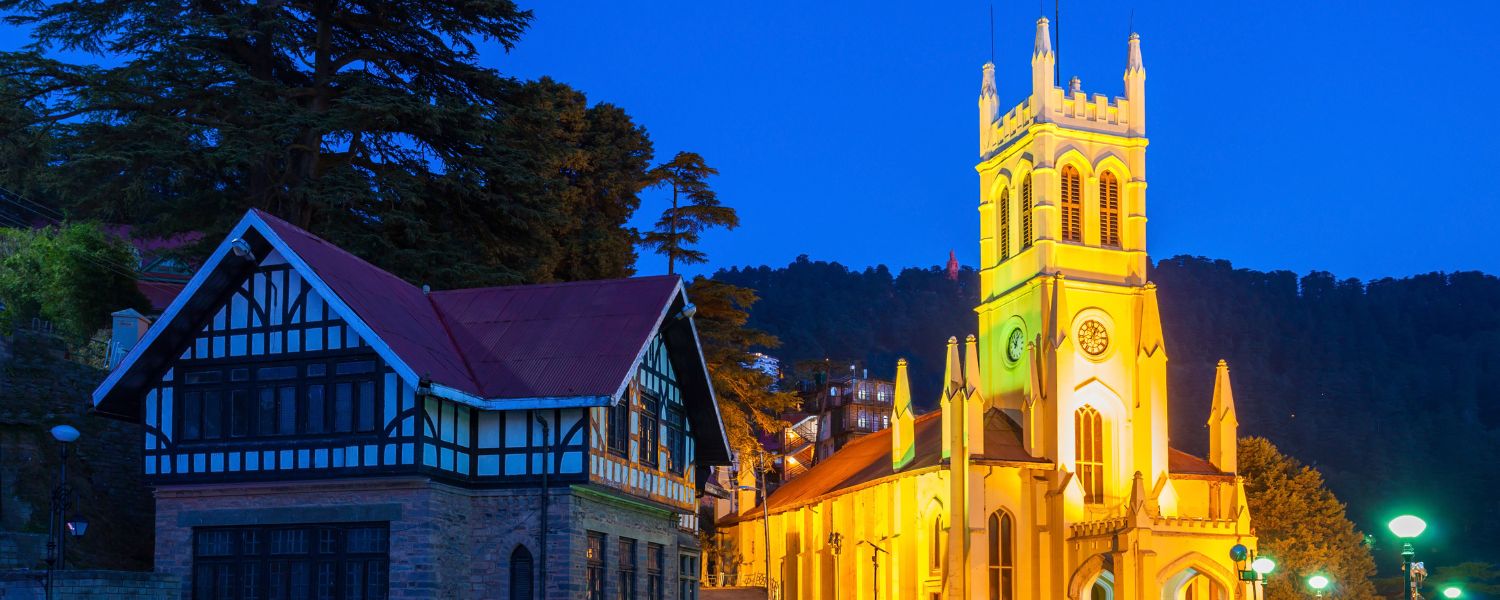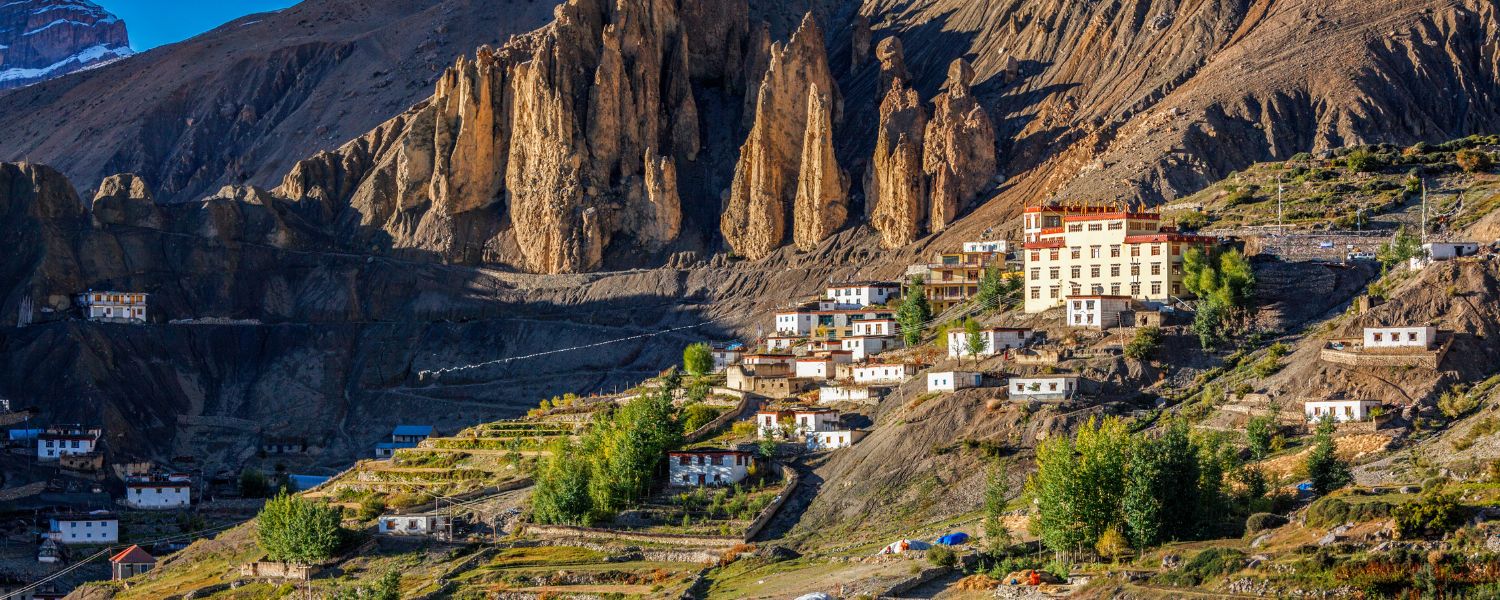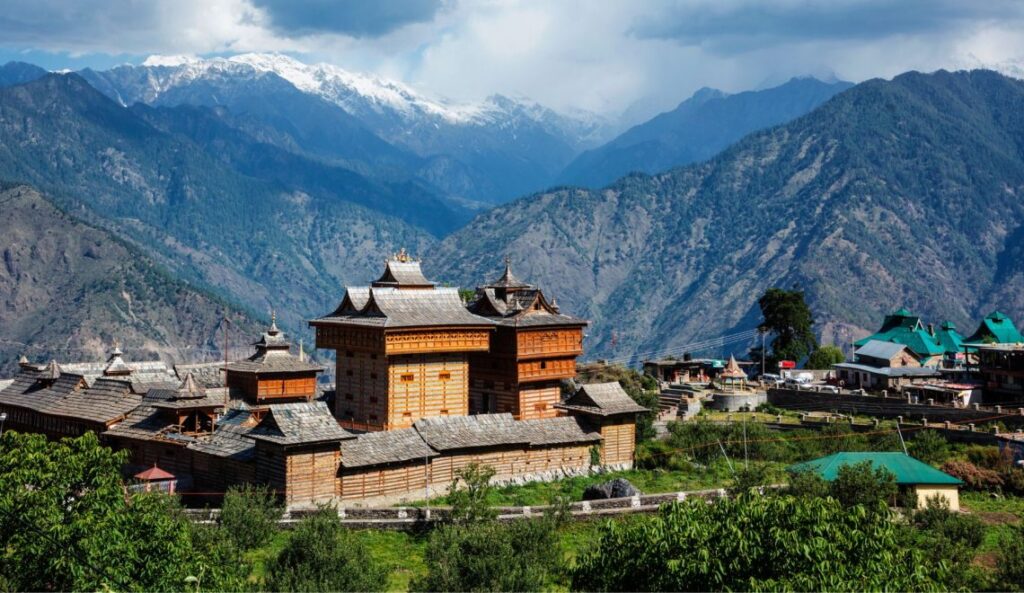Welcome to “Timeless Wonders: Monuments of Himachal Pradesh Past.” Nestled amidst the majestic Himalayas, Himachal Pradesh boasts a rich historical legacy that echoes through its awe-inspiring monuments.
From ancient temples adorned with intricate carvings to medieval forts narrating tales of courage, each structure is a testament to the region’s glorious past. Journey through time as we unravel the enigmatic stories behind these architectural marvels, preserving the cultural heritage and traditions of this northern Indian state.
Discover the fascinating blend of art, spirituality, and history that has endured through centuries, leaving an indelible mark on the vibrant tapestry of Himachal Pradesh’s past.
1. Tabo Monastery

Located in the Spiti Valley of Himachal Pradesh, India, Tabo Monastery is one of the oldest functioning Buddhist monasteries in the world. It was founded more than a millennium ago, in 996 CE, making it over a thousand years old.
The Monastery is an essential centre of learning for Buddhist scholars and is renowned for its ancient murals, scriptures, and artefacts, some of which date back to its establishment.
Tabo Monastery is often called the “Ajanta of the Himalayas” due to its well-preserved and exquisite wall paintings and sculptures. It holds immense significance for both locals and tourists as a cultural, historical, and spiritual landmark.
2. Bhuri Singh Museum

The Bhuri Singh Museum is a significant repository of the region’s cultural heritage, situated in Chamba, Himachal Pradesh. It is named after Raja Bhuri Singh, the erstwhile ruler of Chamba, and was established in 1908.
The museum showcases an impressive collection of artefacts, ancient manuscripts, miniature paintings, traditional costumes, musical instruments, and sculptures, which provide valuable insights into the history and traditions of the Chamba Valley.
Guests can view displays showcasing the area’s deep artistic and cultural legacy, making it a favoured spot for art enthusiasts and history buffs.
3. Masroor Rock Cut Temple

The Masroor Rock Cut Temple is a remarkable archaeological site located in the Kangra district of Himachal Pradesh. The temple complex features a group of monolithic rock-cut temples that are believed to date back to the 8th century.
These temples exhibit a unique blend of Indo-Aryan and Dravidian architectural styles carved from a single rock, showcasing exceptional craftsmanship.
The primary temple is devoted to Lord Shiva, surrounded by smaller sanctuaries honouring different Hindu gods. The site’s historical and architectural significance attracts visitors interested in exploring India’s ancient temple heritage.
4. Kangra Fort

The Kangra Fort, located in the town of Kangra, Himachal Pradesh, is one of India’s largest and oldest forts. Its history can be traced back to at least 4,000 years ago, with successive rulers contributing to its construction and expansion.
The fort provides stunning vistas of the nearby terrain, and its expansive walls, turrets, and temples showcase its past magnificence. Throughout history, the Kangra Fort has witnessed numerous invasions and battles, making it a site of great historical importance. Today, the fort is a testimony to the region’s rich cultural and architectural heritage.
5. Rashtrapati Niwas (Viceregal Lodge)

Built in the Jacobethan style, the Rashtrapati Niwas, also known as Viceregal Lodge, is a historical building on Observatory Hill in Shimla, Himachal Pradesh. It served as the official residence of the British Viceroy of India during the summer months.
Construction started in 1888 and finished in 1889. The building’s design reflects a captivating fusion of British and Indian architectural elements, making it a significant example of colonial-era architecture.
After India gained independence, the lodge was used as a summer retreat by the President of India and is now open to the public as a museum. Visitors can explore its elegant interiors and well-manicured gardens, gaining insight into India’s colonial past.
6. Naggar Castle

Himachal Pradesh Heritage Sites, Ancient Himachal Pradesh Structures, Himachal Pradesh Historical Landmarks, Historical Monuments of Himachal Pradesh, Himachal Pradesh Architectural Wonders, Iconic Monuments of Himachal Pradesh
Naggar Castle is a historical monument in Naggar, a quaint town in the Kullu district of Himachal Pradesh, India. This mediaeval castle dates back to the 15th century and holds significant cultural and architectural importance in the region. Raja Sidh Singh of Kullu built it, and it was later used as the residence of the Raja until the 17th century.
The castle’s architecture blends Himalayan and Western styles, showcasing intricate wood and stone carvings. Tourists can explore the various rooms, including the Raja’s quarters, prayer halls, and the impressive courtyard. From the castle’s vantage point, one can enjoy breathtaking views of the mountains and the Beas River flowing below.
Today, Naggar Castle has been converted into a heritage hotel, offering tourists an opportunity to experience the royal ambiance of the past while enjoying modern amenities.
7. Rang Mahal

Rang Mahal, meaning “Painted Palace,” is a historical monument in Chamba town, Himachal Pradesh, India. It is a magnificent structure that stands as a testament to the region’s rich cultural heritage. Raja Umed Singh, the ruler of Chamba, commissioned the construction of this palace in the mid-18th century.
The Rang Mahal is known for its remarkable architecture and exquisite wall paintings. The palace uniquely blends Mughal and British architectural styles, featuring ornate wooden balconies, sloping roofs, and intricately designed interiors. The walls of Rang Mahal are adorned with beautiful frescoes depicting scenes from Hindu mythology, local legends, and daily life.
Today, Rang Mahal serves as a museum, showcasing an impressive collection of artefacts, traditional handicrafts, and ancient texts, offering visitors a glimpse into the cultural richness of the Chamba region.
8. Christ Church, Shimla

Christ Church is a prominent landmark and one of the oldest churches in India, located on The Ridge in Shimla, Himachal Pradesh. Built in the mid-19th century, it stands as a fine example of Neo-Gothic architecture and has become an iconic symbol of Shimla.
The church’s construction began in 1844 and was completed in 1857. Intricate stained glass windows, wooden pews, and a tall spire characterize its architecture. The church’s interior features beautiful paintings depicting biblical scenes and religious motifs.
The serene and peaceful ambiance of Christ Church attracts both locals and tourists seeking solace and tranquillity. It is a place of worship and a significant historical and architectural marvel, drawing admiration from visitors worldwide.
9. Hidimba Devi Temple

The Hidimba Devi Shrine, also known as the Dhungri Temple, is an ancient and revered religious site in Manali, Himachal Pradesh. Built in the 16th century, the temple is dedicated to Hidimba Devi, a character from the Indian epic Mahabharata and the wife of the Pandava prince Bhima.
This unique temple is constructed in a distinctive architectural style, featuring a three-tiered wooden structure with intricately carved wooden panels and a cone-shaped roof. The temple’s design harmoniously integrates with the surrounding cedar forests, creating a spiritual and peaceful atmosphere.
Devotees and visitors come to seek blessings from Hidimba Devi, and the temple also serves as a cultural landmark for the local community, with various festivals and fairs celebrated here throughout the year. If you are planning a trip to Himachal Pradesh, you can also explore the hill stations of Himachal Pradesh here.
10. Key Monastery

Key Monastery, also known as Ki or Kee Monastery, is a prominent Tibetan Buddhist monastery atop a hill in the Spiti Valley of Himachal Pradesh, India. It is one of the oldest and largest monasteries in the region and holds immense religious and cultural significance for Buddhists.
Believed to have been founded around the 11th century, Key Monastery is renowned for its stunning hilltop location, commanding breathtaking views of the Spiti River and the surrounding mountains. The Monastery’s architecture uniquely blends Tibetan and Indian styles, with white-washed walls, red-colored woodwork, and murals adorning the interiors.
Key Monastery is a prominent learning center for Buddhist scholars and houses a vast collection of ancient Buddhist scriptures, murals, thangkas, and other artifacts. Tourists can also witness the daily rituals and practices of the resident monks, making it a spiritually enriching experience for those who visit.
11. Dhankar Monastery

The Dhankar Monastery, also known as Dhankar Gompa, is a Buddhist temple in the Spiti Valley of Himachal Pradesh, India. It is perched at an impressive height of about 3,894 meters (12,774 feet) above sea level, making it one of the highest monasteries in the region.
The name “Dhankar” translates to “fort on a cliff” in the local language. It perfectly describes its breathtaking location atop a rocky cliff overlooking the confluence of the Spiti and Pin Rivers.
The Monastery has a long history dating back over a thousand years. It was founded as a fort monastery in the 12th century and later transformed into a Buddhist monastery. Dhankar Monastery is an important center for the Gelug school of Tibetan Buddhism and is home to a small number of resident monks.
The architecture of Dhankar Monastery is a blend of traditional Tibetan and local Spitian styles, making it a unique cultural and historical landmark in the region. The Monastery houses ancient Buddhist scriptures, murals, and thangkas (Buddhist religious paintings).
Apart from its religious significance, Dhankar Monastery also offers panoramic views of the surrounding hills, making it a popular place for spiritual seekers and tourists.
12. Taragarh Palace

Taragarh Palace, also known as Taragarh Heritage Hotel, is an exquisite heritage property in Palampur, Himachal Pradesh, India. It was originally built as a summer home for the royal family of the erstwhile princely state of Jammu and Kashmir. The palace is nestled amidst the serene Dhauladhar mountain range, surrounded by lush green tea gardens, offering a picturesque setting.
The construction of Taragarh Palace dates back to the early 1930s when the royal family envisioned a beautiful retreat in the lap of the Himalayas. The palace’s architecture is an elegant blend of colonial and Indo-European styles, ornate wooden carvings, and traditional Himachali elements.
In the present day, Taragarh Palace has been converted into a luxury heritage hotel, preserving its historical charm and providing guests with a regal experience. The hotel offers well-appointed rooms, modern amenities, and warm hospitality, making it a popular choice for travelers seeking a luxurious and tranquil escape in the hills.
Visitors to Taragarh Palace can indulge in various activities, such as exploring the nearby tea gardens, going on nature walks, or simply relaxing in the serene ambiance of the palace and its surroundings.
13. Bhimakali Temple

The Bhimakali Temple is a renowned Hindu temple dedicated to the goddess Bhimakali, an incarnation of Durga. It is in Sarahan in the Shimla district of Himachal Pradesh, India. The temple holds significant religious importance and is one of the 51 Shakti Peethas, which are considered sacred places associated with the power of the goddess Shakti.
The temple’s history can be traced back to the 16th century, and it has undergone several renovations and expansions over the centuries. The architecture of the Bhimakali Temple reflects a unique blend of Hindu and local Himachali styles. The wooden carvings and sculptures on the temple’s exterior and interior are particularly noteworthy, showcasing the traditional craftsmanship of the region.
The temple is known for its annual nine-day festival called the “Bhimsen Fair,” which usually occurs during May and June. During the fair, devotees from various parts of the region seek blessings from the goddess Bhimakali.
The serene and scenic location of the Bhimakali Temple, surrounded by snow-capped mountains and apple orchards, adds to its spiritual ambiance, making it a must-visit pilgrimage site and a popular tourist attraction in Himachal Pradesh.
14. Raj Bhavan, Shimla

Raj Bhavan is the official residence of the Governor of Himachal Pradesh and is located in the capital city, Shimla. The building serves as the administrative headquarters and residence of the state’s Governor and is a historical landmark reflecting India’s colonial past.
The construction of Raj Bhavan began in the late 19th century during British colonial rule. It was originally built as the residence of the British Viceroy, the highest-ranking official representing the British Crown in India.
After India gained independence in 1947, the building became the official residence of the Governor of Punjab, and later, when Himachal Pradesh was established as a separate state in 1971, it became the Governor’s residence for the state.
The architecture of Raj Bhavan is an elegant blend of British colonial and Victorian styles, with sprawling lawns and well-maintained gardens surrounding the premises. The building boasts a majestic aura and stands as a symbol of the state’s rich history.
15. Sujanpur Fort

Sujanpur Fort is a historical monument in Sujanpur Tira in the state of Himachal Pradesh, India. The fort holds immense historical significance as it was built in the 18th century by Raja Abhay Chand of the Katoch dynasty. The architecture of the fort reflects a blend of Rajput and Mughal styles.
Sujanpur Fort served as the Katoch rulers’ royal residence and acted as a center for cultural and artistic activities during their reign. The fort complex includes a palace, gardens, and various temples.
16. St. John in the Wilderness Church, McLeod Ganj

St. John in the Wilderness Church is a prominent historical and religious site in McLeod Ganj, Himachal Pradesh, India. Built in 1852, the church has a striking neo-gothic architectural style dedicated to John the Baptist. The church’s unique name is derived from its location, as it was built amid a dense forest, which has now thinned out due to development.
It houses beautiful stained glass windows and a memorial dedicated to Lord Elgin, the Viceroy of India, who passed away in Dharamshala. The tranquil ambiance and picturesque surroundings make it a popular destination for tourists and locals.
17. Chamunda Devi Temple

Chamunda Devi Temple is an ancient Hindu temple dedicated to Goddess Chamunda in the Kangra district of Himachal Pradesh, India. This sacred temple holds immense religious significance and attracts devotees from various parts of the country.
The deity Chamunda Devi is considered a powerful form of Goddess Durga, known for her protective and fierce nature. The temple complex offers panoramic views of the surrounding hills and valleys, adding to the spiritual experience of the visitors.
18. Nyingmapa Monastery, Tabo

The Nyingmapa Monastery, also known as Tabo Monastery, is a renowned Tibetan Buddhist monastery in the Tabo village of the Spiti Valley, Himachal Pradesh, India. Established in 996 CE, it is one of the Himalayan region’s oldest continuously functioning Buddhist monasteries.
The Monastery is famous for its ancient murals, exquisite thangka paintings, and many scriptures, including the Kanjur and Tanjur texts. Nyingmapa Monastery is considered a treasure trove of Tibetan Buddhist art and culture and has been designated a UNESCO World Heritage Site.
19. Bajreshwari Temple

Bajreshwari Temple, also known as the Kangra Devi Temple, is a significant Hindu pilgrimage site in Kangra, Himachal Pradesh, India. The temple is dedicated to Goddess Vajreshwari, an incarnation of Goddess Durga.
It holds a rich historical background, but the current structure was rebuilt after being damaged by multiple earthquakes in the past. The temple’s architecture showcases a blend of ancient and modern styles. It attracts a large number of devotees during festivals and religious occasions.
Conclusion
“Timeless Wonders: Monuments of Himachal Pradesh Past” showcases the region’s architectural marvels’ enduring beauty and historical significance. The rich heritage of Himachal Pradesh is depicted through its ancient monuments, standing as a testament to its past inhabitants’ skilled craftsmanship and cultural prowess.
These structures offer a glimpse into the vibrant history and traditions of the region, captivating visitors with their awe-inspiring beauty and historical narratives. Preserving and cherishing these monuments is crucial to understanding and appreciating the essence of Himachal Pradesh’s past, ensuring that future generations can continue to marvel at these timeless wonders and learn from their cultural legacy.










